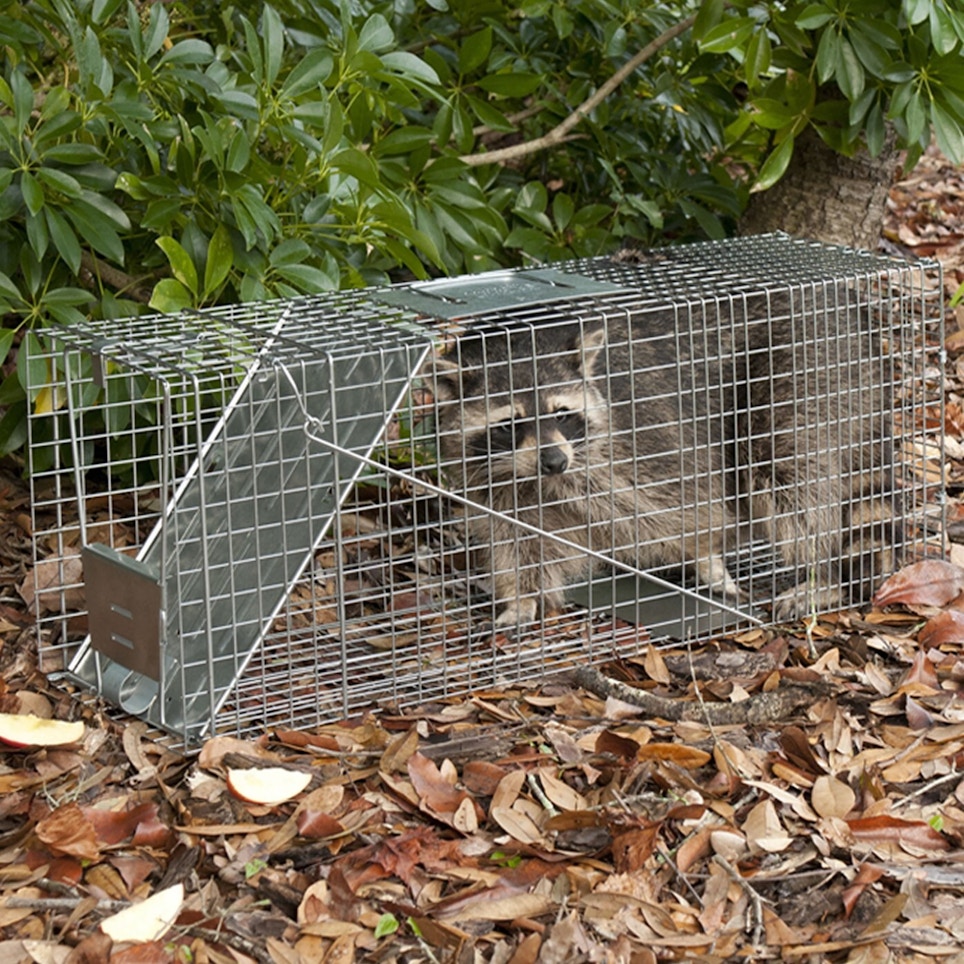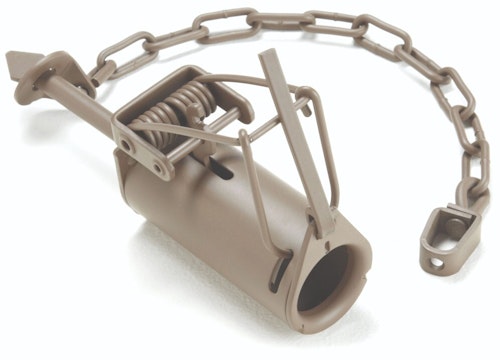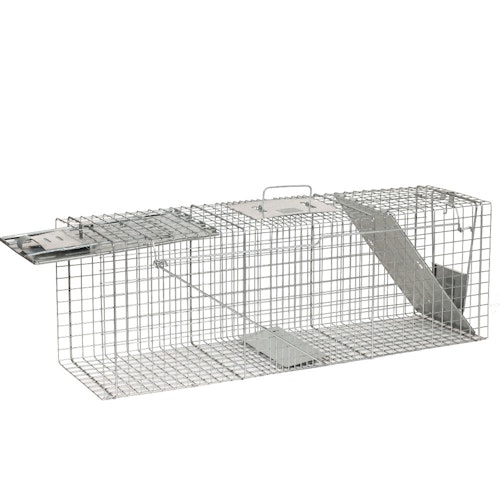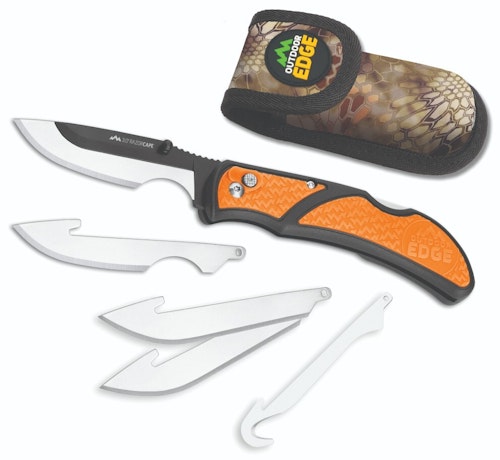While trapping isn’t as popular as it used to be, there are still more than 100,000 licensed trappers across the United States who pursue a wide variety of fur-bearing animals. Despite fur prices being low — mostly because of anti-fur sentiment spread by those who don’t understand wildlife conservation — many Americans still choose to trap furbearers both for fun and profit.
Aside from trapping for the furs, many people choose to trap raccoons to alleviate various problems like having their dog or cat food eaten off the porch, having their poultry coop raided by the masked bandits or catching a coon that keeps the dogs barking the entire time they are out in the yard.
Wildlife biologists estimate raccoon numbers in North America swelled 15 to 20 times from the 1930s to the 1980s. Since then, numbers have continued to climb as the critters have adapted well to suburban and even some urban environments. Consequently, those wanting to trap raccoons will find plenty of supply to meet their demand.
Note that the “lovable” raccoon, as many city dwellers consider it, isn’t always that lovable. The animals feast on the eggs of game birds like quail and wild turkeys and have been at least partially responsible for the decline in the population of those species over the past few decades. They are also a great pest to deer hunters who run corn feeders. I’ve seen as many as 14 raccoons below a single corn feeder at the same time on the area I hunt in western Oklahoma, and some learn how to spin the feeder spinner to feed their family below, which can greatly increase the corn bill.
To cater to your coon- trapping customers as well as those looking to get into trapping the “masked bandit,” consider carrying three important pieces of gear.
Dog-Proof Raccoon Traps
One of the problems raccoon trappers have had over the years is catching something other than their target animal in their traps. I know this all too well. As a youngster, I wanted desperately to be a trapper, and the wily raccoon was my favorite target animal. After catching my neighbor’s beagle — twice — in my leghold traps, my trapping career came to a sudden end. (The beagle was fine, but the neighbor was quite aggravated.)
That problem has been all but alleviated with the widespread availability of “dog-proof” raccoon traps, which catch raccoons and just about nothing else except the occasional opossum or skunk. These traps were originally referred to as “coon cuffs” since they are so effective at catching the masked bandit wherever he is found in the United States.
Dog-proof traps are small metal tubes with a trigger toward the bottom. Bait is placed in the bottom of the trap below the trigger. There are commercial brands of bait available, but many household items work well, from cat food to canned sardines to sweet concoctions like marshmallows soaked in maple syrup. To be caught, the raccoon must reach past the trigger, grab the bait in its agile paw and pull to remove the bait. That triggers the trap, which catches the raccoon by the foot. Dogs don’t have the dexterity to reach into the small hole, nor do coyotes or foxes, so they won’t be caught in the trap. Such traps are also extremely unlikely to catch cats because of the dexterity required to reach down into the trap and get at the bait. One of the best and easiest dog-proof raccoon traps to use is the Duke Dog Proof Coon Trap. It features heavy-duty construction so will last a lifetime. Simply set the trap, stake the chain and push the trap’s stabilizing stake into the ground at a 45-degree angle. Since it features a pull-type trigger, it is great for raccoons but will rarely catch other animals. The first time I bought one because of a pesky raccoon troubling my chickens, I caught the culprit the first night using canned cat food for bait.
Box Traps
Box traps, often called live traps, have been around about as long as fur trappers have. Originally made of wood pegged, nailed or screwed together, modern live traps are typically made of heavy-duty wire, making them much lighter and easier to transport than their early, handmade predecessors.
A box trap works by having an opening at one or both ends and a trip pan either in the middle (double-door trap) or toward the opposite end (single-door trap). Bait is placed on the pan for two-door traps or behind the pan for the single-door variety, and the trap is super easy to set. When a raccoon or other animal steps on the pan, the door closes behind it, securing it in the trap.
One great box trap for trapping raccoons is the Easy Set Large 1-Door Animal Trap from Havahart. A leader in the manufacture of live animal traps for over 70 years, Havahart has continued to improve their traps to the effective tools they are today.
The Large 1-Door trap features the company’s patented easy-set design that allows users to set the trap with just one hand. An enlarged steel plate and handle on the top of the trap minimizes risk of contact with the animal, and smooth, rolled trap edges protect the trapped animal from injury. A sensitivity screw attached to the trip pan even lets the user tailor the trap to the target animal.
Of course, this trap is prone to catching more than just raccoons. Armadillos, groundhogs, muskrats, nutria, opossums and skunks can also be caught in the trap, as well as the occasional house cat or feral cat looking for an easy meal. However, it’s simple to release those animals unharmed if desired.
Skinning Knife
While it might seem obvious, if your customers decide to trap raccoons for the fur, they’re going to need a good skinning knife, which might just lead to an extra sale. Skinning raccoons isn’t terribly difficult, but a knife designed for the purpose makes the job much easier.
One knife that can make that job much quicker and easier for your customers is the RazorCape from Outdoor Edge. The RazorCape is a lightweight knife that features two replaceable, scalpel-sharp, 3-inch skinning blades to perform the intricate task of skinning an animal.
The blades are made from Japanese 420J2 stainless steel and hand-finished to achieve their razor-sharp edges. They are seated in a black oxide-coated steel blade holder, providing the strength of a traditional knife. The handle is constructed from a lightweight, one-piece, non-slip Grivory polymer. The stainless steel blades have a Rockwell-C Hardness (HRC) rating of 55-56, offering great control and precision, along with better edge retention.
Incredibly, even with its 7.1-inch overall length, the knife weighs just 2 ounces. And changing the blades is not only super easy, but doing so eliminates the need for sharpening — a task many of us loathe.
As a bonus, this knife also has a lot to offer big game hunters. Along with the 3-inch skinning blades, it also comes with two replaceable, scalpel-sharp, 3-inch drop-point blades suited for the heavy lifting of field dressing and quartering your game, along with a single 3-inch gutting blade to effortlessly cut beneath the hide without piercing internal organs.









